Stagnant plants? Use these Tricks to Promote New Growth in Houseplants and make them grow faster, bushier, and healthier!

Waiting endlessly for your beloved monstera or prized philodendron to sprout new leaves? Even the healthiest indoor plants can hit a snag and show no signs of fresh life! Luckily, with these tricks, you can jumpstart revival and promote new growth in your houseplants!
Tricks to Promote New Growth in Houseplants
1. Use Natural Growth Hormones

Prepare a natural rooting hormone with honey or cinnamon to promote new growth in houseplants growing from cuttings. Both ingredients have antibacterial and antifungal qualities that deter infections. Honey also has sugar that provides the plant energy to stimulate new roots.
Dust the cuttings with cinnamon or dip the cut ends in honey to stimulate root growth when propagating plants. Check out these amazing DIY rooting hormone recipes.
2. Prune for Fresh Sprouts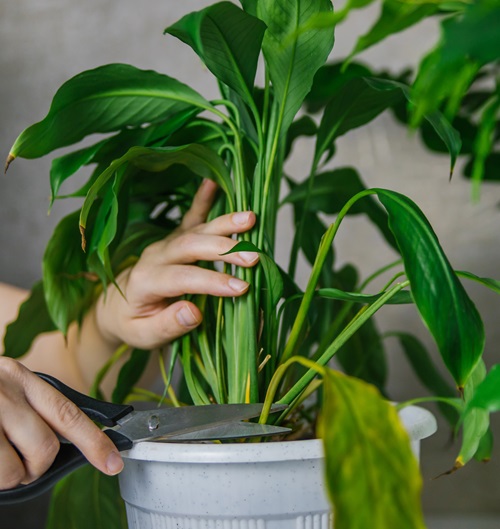
Trim your plant regularly and remove dead or overgrown branches so that the plant focuses its energy on sprouting fresh shoots and leaves. Use clean scissors to remove damaged or leggy parts, which also encourages new growth.
Pruning, which targets the removal of larger sections such as branches or stems, helps lateral shoot growth near the cut and prevents the plant from getting too leggy and unkempt.
3. Pinch for Bushy Growth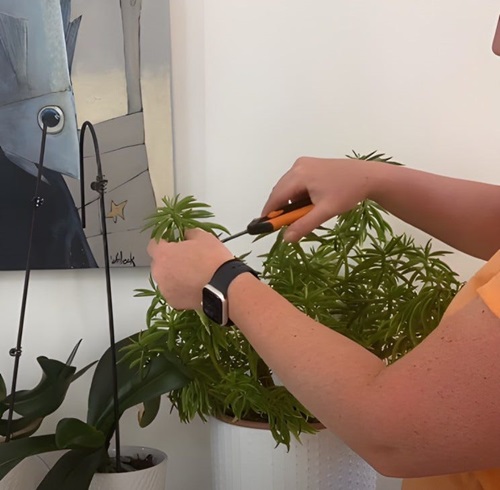
Pinching is a more delicate action that involves removing just the tip of the stem to encourage bushier growth. This helps the plant grow more lateral shoots and foliage, gives it a fuller, bushier form, and helps produce more flower buds and fruits.
You can pinch the top growth anytime, but especially when plants are 6-12 inches tall and have 4-5 sets of leaves, pinch above the nodes where the stem connects to the leaf.
Both pruning and pinching can trigger the release of cytokinins, a hormone that coaxes the plant into producing new shoots. Removing the growing tip (apical bud) also reduces the effect of a hormone called auxin, which inhibits new buds from forming.
It’s just the scale of impact that might differ depending on how much of the plant is pruned versus pinched.
4. Feed your Plants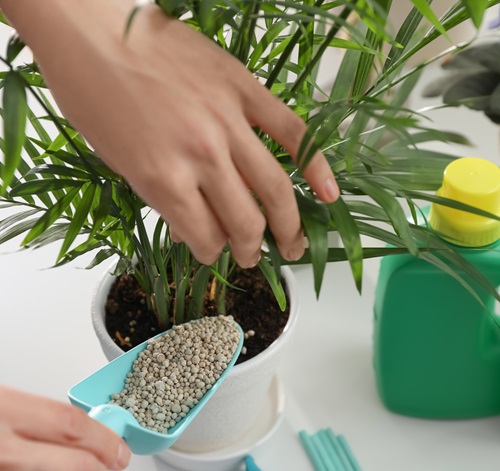
If you want to boost new growth in plants, then fertilize them during the growing season frequently every 2-4 weeks but in low strength.
Phosphorus and potassium are two key nutrients that help plants grow strong and support healthy roots, while nitrogen helps push out new leaves and shoots. A balanced liquid fertilizer like 10-10-10 (NPK) should do the trick and help with the growth.
Follow the instructions on the package, but reduce the dose to one quarter or half of the recommended strength to avoid chemical burns and other harmful complications.
5. Repot When it’s Time
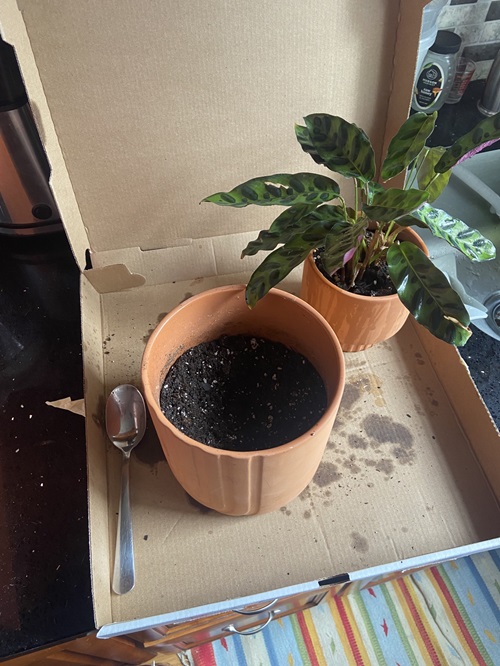
Your perfectly healthy houseplant maybe stuck because there is no where to go! When the plant becomes root-bound and outgrows the container, it can stunt growth. This is a clear indication for repotting! It’s time to move homes.
Moving the plant to a slightly larger pot with fresh soil gives the roots more space to revive and grow, preferably in the growing season.
It’s a good idea to repot the plant when it is root-bound but keep in mind that certain plants grow better in pot-bound conditions.
So, before you plan to move the plant to a new home, check if it is not planted in a big container. In such cases, repot those plants in slightly small planters to promote growth.
But be careful not to pick the wrong pot size for your plant’s new home. Avoid these mistakes when repotting!
6. Use Epsom Salt for Magnesium Boost
Dissolve a tablespoon of Epsom salt in a gallon of water to give the plant a dose of magnesium. It helps produce chlorophyll and promotes healthy growth. Use this solution once a month to water plants. Here’s how to use Epsom salt on any houseplant!
7. Stake your Creepers & Climbers 
This tip is helpful for plants with slender stems that cannot stay upright or support themselves in containers—especially climbers that naturally look for something to grab onto to spread via aerial roots.
Without a stake or support infrastructure, all its energy will go into growing and spreading roots and searching for surfaces to cling onto versus growing leaves.
So, if you want such plants, such as pothos, to grow bigger leaves and fast upright growth, give them a stake to climb.
8. Pick Fast-Growing Houseplants
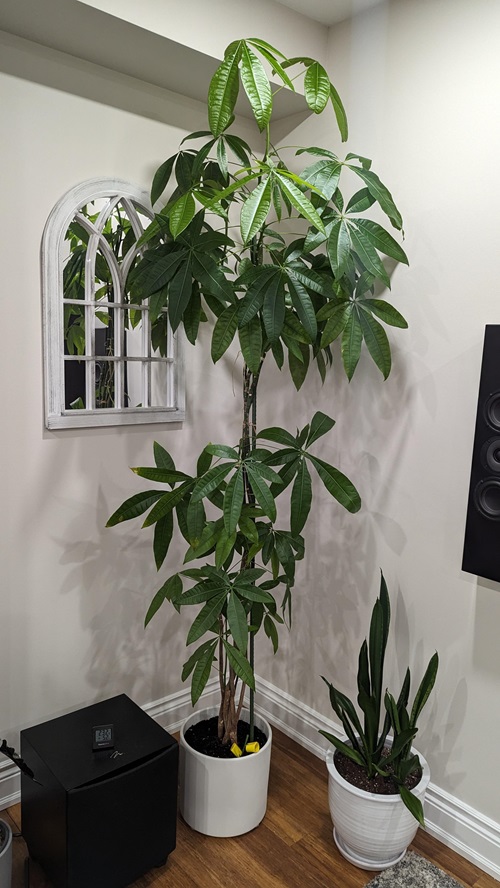
Each plant takes its own sweet time to come into its own. So, if you are more of an impatient gardener seeking quick results and looking for large statement houseplants, simply pick plants that grow fast.
Pothos, Syngonium, Philodendron—the sky’s the limit when it comes to fast-growing plants. In addition to these, you can also check out our favorite picks here.
9. Remove the Suckers
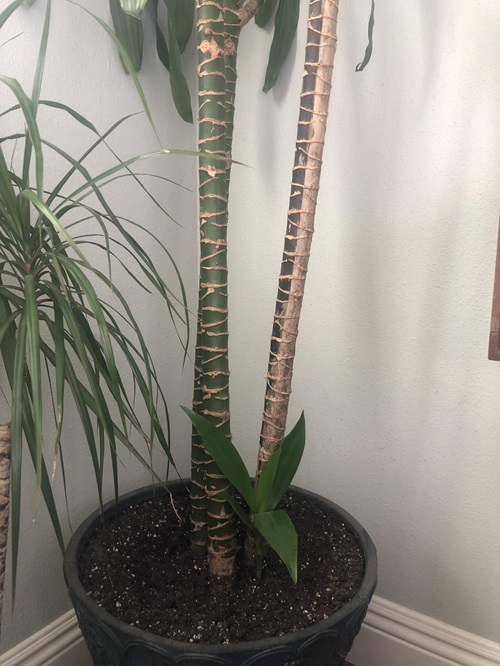
Consider suckers in houseplants as baby plants or pups that grow at the base of the mother plant. These need a lot of energy to grow, usurping resources meant for the parent plant, thus slowing its growth.
To help your main plant stay strong, it is a good idea to remove the suckers. You can take them off as soon as you see them or wait until they are 3-4 cm tall and have roots. Then, you can cut them off to grow into new plants.
Note: This tip doesn’t apply to monocarpic plants, which only flower once and then die, like some agave species, sempervivums, yuccas, bamboos, or bromeliads. With these plants, let the offshoots grow until they are about a third the size of the mother before removing and repotting them.
10. Provide Enough Light and Stable Temperature
If you want your indoor specimen to grow faster, observe its position. Is it getting sufficient light? If not, move it to a spot with more direct and indirect light. Another must-do is to rotate it every week for even exposure!
Most houseplant varieties favor a consistent temperature range between 60 and 85 F (15 and 30 C). Warmer temperatures usually speed up these processes. However, if it’s too hot or cold, plants can become stressed and grow slowly.
If your plant is exposed to cold drafts or hot air and in a spot with rising and falling temperatures, it can stunt the growth.
Keep your indoor plant in an area with a stable temperature. Do not place it near heating vents, air conditioners, or drafty windows, as these can cause sudden temperature changes and bring the plant to a standstill.


